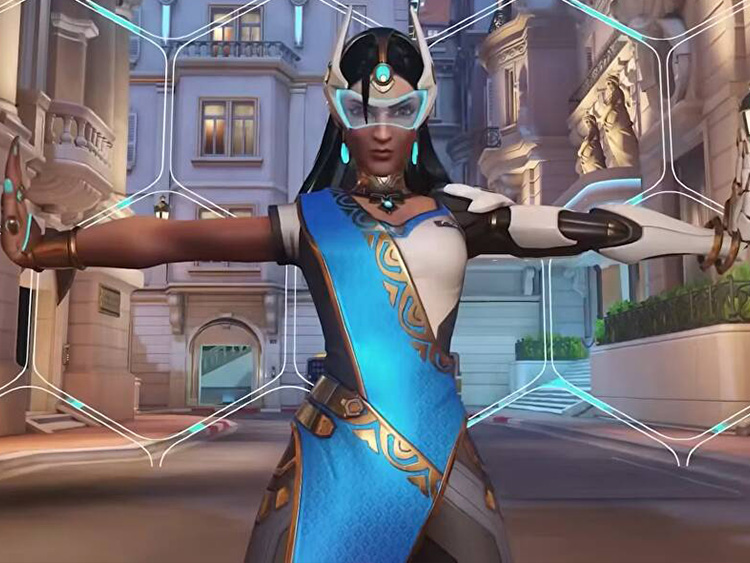
Overwatch 2 tries to balance acquisition against retention | Opinion
Blizzard’s sequel-cum-relaunch remains the year’s most interesting business experiment as it tries to thread the needle of retaining existing players while appealing to newcomers
As the release slate of major games for the remainder of the year continues to thin out – the latest casualty being Ubisoft’s pirate-themed naval combat game Skull & Bones, which has slipped back to March – increased attention inevitably focuses on what’s left in the line-up.
Nintendo still has a strong holiday quarter on the cards, with Bayonetta 3 and Pokemon Scarlet / Violet giving it solid pitches at two very different parts of the Switch demographic, while Sony has a sure-fire hit in God of War Ragnarok in November.
Beyond those platform exclusives, however, there are only a handful of big titles still slated for the upcoming months. There’s Call of Duty: Modern Warfare II, which seems like a guaranteed blockbuster; there’s Gotham Knights, which could really go either way (after the critical and commercial failure of Square Enix’ Avengers game, I don’t think any superhero title can be considered a slam dunk, with the possible exception of Sony’s Spider-Man series). And then there’s Overwatch 2.
I’ve written before about how Overwatch 2 is, from a business perspective, the most interesting game of the year – a complete root and branch overhaul of the business model of a successful live service game masquerading as the launch of a sequel. Blizzard is attempting something extremely complex here, turning a $60 premium game with a large, active player base into a free-to-play game overnight.
Every time I read about it I’m reminded of the time-lapse video of Shibuya Station that went viral around the world a few years ago, showing how engineers reconfigured two major train lines to connect them up on new platforms in the space of a single night, without any disruption to either the morning or evening train services. Blizzard’s goal is similar – it wants to make a gigantic change to its service offering, without disrupting the experiences of its customers. It won’t make for such an entertaining time-lapse video, but it’s a fascinating experiment, and with the launch set for next Tuesday, the experiment is happening in real-time right now.
Judging from the reporting and online discussions around the game, that experiment has hit a few bumps in the past week, thanks to the unveiling of the First Time User Experience (FTUE) for those coming to Overwatch 2 as new players, rather than continuing players of the original game. Attracting new players is, of course, a major reason for this launch; the premium up-front payment model of the original Overwatch arguably stunted its player base growth compared to games like Fortnite, so Blizzard hopes to see a large influx of new players when Overwatch 2 arrives as a free download.
Being a big, high-profile franchise launching in a period when tumbleweeds are rolling across the AAA release schedule will no doubt help to drive a lot of new people to check out Overwatch next week and in the weeks to come – which will be great for Blizzard, but will also bring its own problems.
Just like existing players of Overwatch needed to be accommodated in the business model overhaul (leading to the decision to brand this as Overwatch 2 rather than as a new phase for the existing game, and no doubt informing the decision to drop the loot box monetisation system in favour of the more popular season pass system), the game’s existing player base also needs to be considered in any plans that would result in new players suddenly flooding into the service.
One key way to accomplish this is the extensive FTUE for Overwatch 2, which eases new players into the game by gating access to content and game modes behind progression barriers. This means that while returning Overwatch players will instantly be able to access all existing playable characters, modes, and features, new players will have to play for many hours before unlocking them.
Glance at the headlines, and it looks Blizzard has stumbled badly in how this is implemented. The most common figure being bandied about is that new players will have to play around 100 matches in order to unlock all of the character roster being carried over from Overwatch 1.
Meanwhile, anyone who wants to play competitively will need to win 50 quick matches before unlocking that functionality. That’s a huge amount of game time to be able to access content that existing players of Overwatch can use on day one, and on the face of it, it’s not unreasonable to wonder if this long, long on-ramp might not put off a lot of new players – players who have made no commitment beyond downloading a free client, and can shrug and drop the game at any moment without any sense of sunk cost.
Source: https://www.gamesindustry.biz/overwatch-2-tries-to-balance-acquisition-against-retention-opinion

